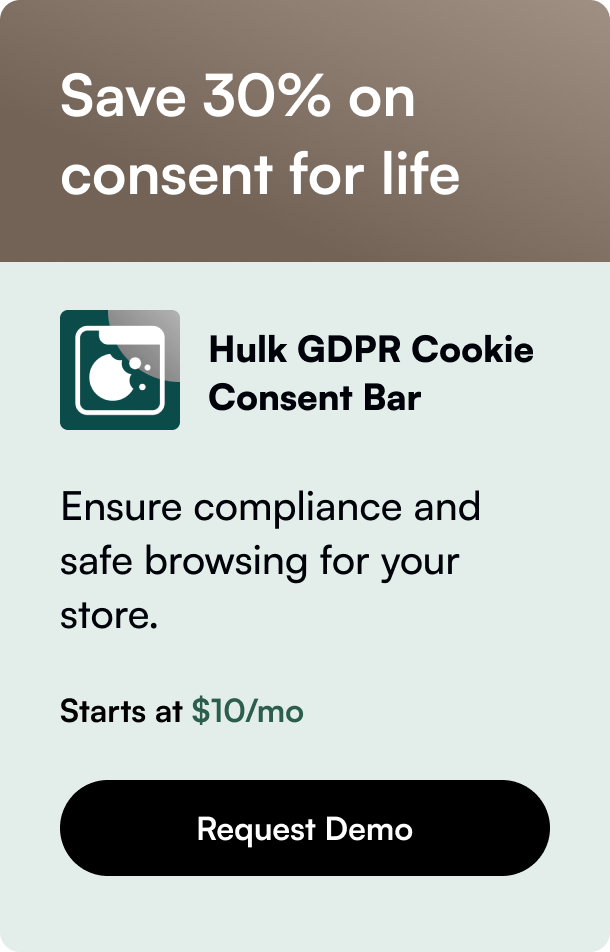Table of Contents
In the dynamic world of e-commerce, utilizing data-driven insights to enhance customer experience and increase conversions is paramount. One powerful tool at the disposal of Shopify store owners is Google Pixel, a snippet of code that allows for the collection and analysis of user interaction data. This blog post delves deep into the intricacies of integrating Google Pixel with your Shopify store, providing you with a clear, step-by-step guide to leverage this potent tool for your online business success.
Introduction
Have you ever wondered how some online stores seem to know exactly what you're interested in, nudging you gently towards making a purchase? Or how they manage to retarget you with perfectly timed ads? The secret lies in the smart use of tracking pixels - and Google Pixel is a prime example of this technology. Whether you're aiming to fine-tune your marketing strategies, enhance your ad targeting, or simply understand your audience better, adding Google Pixel to your Shopify store is a pivotal step.
As the e-commerce landscape becomes ever more competitive, leveraging tools that help you gain insights into customer behavior is crucial. This post will guide you through the process of integrating Google Pixel into your Shopify store, regardless of whether you're tagging for Google Ads or setting up tracking through Google Analytics. Moreover, it will highlight the importance of such integration in crafting personalized customer experiences and driving sales. So, let's dive into the world of enhanced e-commerce tracking and unveil the full potential of your Shopify store.
Understanding Google Pixel
Before we delve into the "how," it's crucial to comprehend the "what" and "why." Google Pixel, primarily known in the context of Google Ads and Google Analytics, is not a physical product but a digital tag that collects data about user interactions on your website.
This data can be anything from the pages they visit, the products they view, to the actions they take - like making a purchase. The insights garnered from this data are invaluable. They allow for tailored advertising strategies, comprehensive performance analysis, and an overall enhanced understanding of your audience.
Setting Up Google Pixel on Shopify
Shopify's integration with Google services facilitates a relatively smooth setup process for Google Pixel. However, the approach differs slightly depending on whether your focus is on Google Ads or Google Analytics, primarily designated by tag IDs starting with "AW-" and "G-" respectively.
If Tag ID starts with AW-
For those utilizing Google Ads, the simplest method to add Google Pixel is through the Google & YouTube app available on Shopify. This direct integration enables setup for conversion tracking without dabbling into the coding parts. Should you choose to bypass the app for a more hands-on approach, manual setup is possible but recommended for advanced users due to its complexity and the risk of inaccuracies in tracking data.
If Tag ID starts with G-
Google Analytics users can also benefit from a straightforward setup through the aforementioned Google & YouTube app. However, like its Google Ads counterpart, a manual setup option is available. This option, while intricate, allows for a deeper level of customization for those with the technical know-how.
Custom Pixels and Advanced Configurations
Beyond the basic setup, Shopify offers the latitude to create and manage custom pixels. This is especially beneficial for advanced users seeking to track custom events or fine-tune their data collection strategies beyond the standard offerings.
Using Google Tag Manager (GTM) as a vessel for your custom pixel, you can subscribe to specific customer events and push them to GTM's dataLayer. This advanced technique opens a door to a plethora of custom tracking opportunities, offering insights that can significantly refine your marketing and sales strategies.
Common Challenges and Solutions
Despite the streamlined process Shopify promises, setting up Google Pixel isn’t without its hurdles. From “Refused to Connect” errors when attempting to install plugins, to difficulties in seeing real-time data updates, various issues can arise. The consensus solution often involves reinstalling the Google sales channel app or removing conflicting codes from your Shopify theme files.
Conclusion and FAQs
Integrating Google Pixel into your Shopify store unlocks a treasure trove of data-driven insights, enabling targeted marketing, improved customer experience, and ultimately, increased sales. Through a combination of automated and manual setup options, Shopify offers flexibility to cater to both novice users and seasoned developers.
FAQs
Q1: Can Google Pixel be added to any Shopify plan? Yes, Google Pixel can be integrated with any Shopify plan, including basic setups. The process varies slightly based on your specific needs and technical expertise.
Q2: Do I need technical knowledge to add Google Pixel to my Shopify store? While having a technical background can be beneficial, especially for custom setups, Shopify provides straightforward options for those without technical expertise, primarily through the use of its Google & YouTube app.
Q3: How long does it take for data to start showing after setting up Google Pixel? Data from Google Pixel can start showing as quickly as a few hours after setup. However, it's advisable to wait at least 24 hours before reviewing data for accuracy and completeness.
Q4: Can I track custom events with Google Pixel on Shopify? Yes, by using Google Tag Manager along with custom pixel setup, you can track a wide range of custom events tailored to your specific tracking needs.
Leveraging Google Pixel within your Shopify store is not just about collecting data; it's about unlocking the potential to transform that data into actionable insights. By following this guide and utilizing the tools and tips provided, you're well on your way to elevating your e-commerce game.







